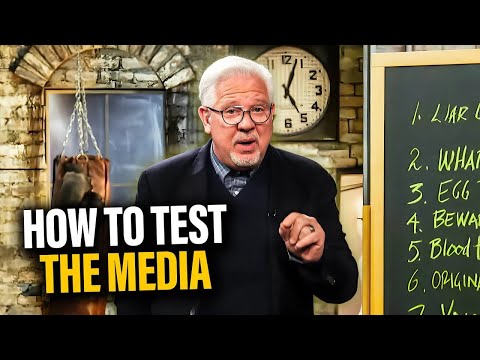**Navigating the Truth in a World Full of Misinformation**
In today’s world, technology makes it trickier than ever to discern the truth from the fiction. As news spreads faster than a speeding bullet, the ability to determine which sources are reliable is crucial. This challenge has become a hot topic, leaving many scratching their heads while asking, “How do I know who to trust?” Thankfully, a new book titled *Propaganda Wars* aims to tackle this issue head-on, providing readers with some simple and practical tools to identify fake news.
One of the first strategies highlighted in the book is the “Liar Liar Test.” It’s as straightforward as it sounds—if a media source misleads you once, stay alert. Future information from them should be scrutinized more closely. Trust isn’t given lightly; it’s earned back with time, understanding, and a sincere effort to correct past mistakes. If a source has previously spun a tall tale, they need to put in overtime to regain their credibility, and a simple apology may not cut it. Furthermore, the quest for truth should always supersede personal biases. After all, the truth remains unchanged regardless of one’s preferred narrative.
Next up is what’s affectionately dubbed the “What is a Woman Test.” This particularly clever litmus test checks if “experts” can differentiate between undeniable realities like gender. If someone struggles with such a fundamental concept, it’s best to steer clear of their opinions altogether. The mainstream media has tripped over this concept more than once, confusing audiences with convoluted narratives that throw common sense out the window.
Another interesting test provided in the book is the “Egg Throwing Gorilla Test.” It might sound odd, but it reflects the bizarre political climate we find ourselves in. A notable example is when a prominent candidate faced racial attacks during his campaign, even being labeled with unfounded accusations. If a source blatantly disregards the facts or twists them for their agenda, then they are likely untrustworthy. This principle holds especially true when evaluating claims that contradict one’s own interests—after all, those who have nothing to gain by telling the truth might just be the most trustworthy of all.
As one delves deeper into these informative strategies, the book emphasizes vigilance against those who promote violence through their rhetoric. When a source openly supports or calls for aggression, it serves as a glaring red flag. This kind of behavior often indicates a lack of moral compass, further complicating the reliability of any outside information coming from such channels.
Lastly, the original source test reminds us that diligent researchers must dig for the truth. It’s easy to repeat something heard in passing or seen in a meme, but knowing where a fact originates is vital. If a news outlet cites a dubious source without proper verification, it’s essential to raise eyebrows and question the information’s integrity.
In a digital age saturated with propaganda, selecting trustworthy sources is no small task. However, with the help of practical tactics like those highlighted above, the discerning citizen can better navigate through the mire. *Propaganda Wars* provides a guide to understanding how to define reality amid distractions, leading us all a step closer to uncovering the truth. After all, knowledge is power, especially when it’s grounded in factual information. So, tighten up that critical thinking cap and get ready to combat the sea of misinformation—truth is out there, just waiting to be discovered.



